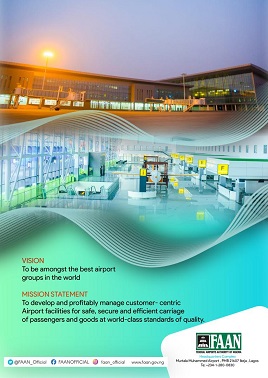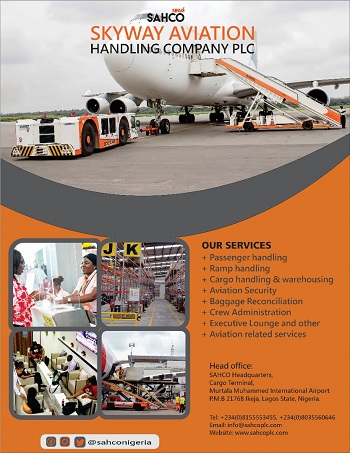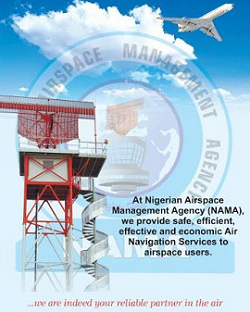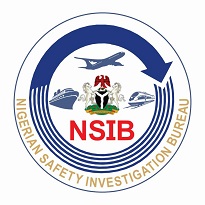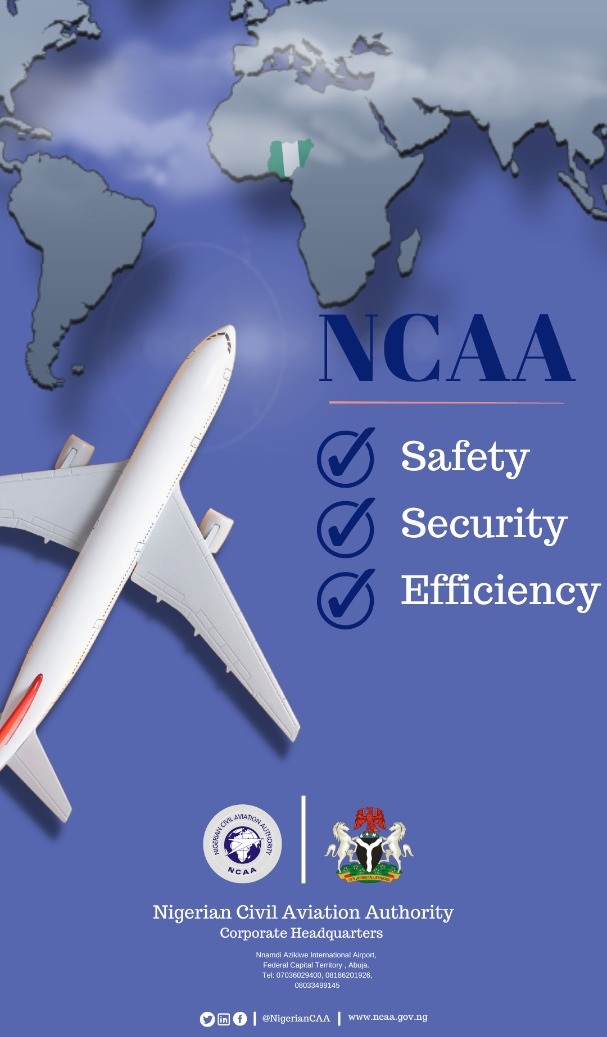
By John O. Ojikutu
The current imbroglio between Nigerian Civil Aviation Authority (NCAA) and the Nigeria telecoms companies may lead to a situation where over 120 million users of the country’s communication system including government Ministries, Departments and Agencies (MDAs) and security agencies will be put into darkness and the national security could be seriously threatened if the concerned government authorities do not wave into it on time.
It has taken more than three years for the NCAA to begin the enforcement of the provisions of its 2015 Regulation for Aviation Height Clearance (AHC) on structures which by virtue of their heights, locations, or positions could be considered to constitute hazards to air navigation within Nigeria navigable airspace.
If due diligence were conducted as required by Nig CARs, before the installation or location of the masts, 7000 masts could not have exceeded the dimensions of the AHC allowed in the established aeronautical airspace.
To start with, if the plan of the NCAA to pull down 7000 telecommunication mast is not quickly curtailed by concerned state security agency, the consequences could aggravate further the various insurgencies of the homegrown terrorist groups that are spreading now all over the country.
Whatever debts owed the NCAA by the telecoms companies for the “AHC benefits” or for locating their masts within established aeronautical airspace could be resolved through arbitration at appropriate courts but not at the expense of air safety.
However, the NCAA must ensure too that it has sufficiently complied with its own obligation as required by appropriate section of Part 12 of the Nig CARs for each of the 7000 masts it plans to pull down if and only if the masts are within the dimensions of established aeronautical airspace or have exceeded the AHC limit in the areas of location.
On a more serious thought, the issues of interference or potential electromagnetic effects of the telecoms signals on aeronautical signals should necessarily be the reason for the NCAA plan on the removal of any masts. Therefore, for safety concern, the immediate relocation of masts with signals interference to appropriate alternative location should be one of the primary reasons for the NCAA warnings to the telecoms companies.
Signals from telecoms masts if located within designated or established aeronautical airspace could affect flights more on their approaches for landing and takeoff than en-route.
However, the NCAA should transparently substantiate its action with records or reports of signal interference from pilots and Nigerian Airspace Management Agency (NAMA). One should however ask; where was the NCAA when 7000 telecommunication masts were installed or located within the dimensions of established aeronautical airspace if these areas were published or were made known to the telecom companies?
It is much safer for the NCAA to ask the telecoms companies to remove masts that have exceeded the prescribed AHC limits to safe areas than for NCAA to be collecting fees while they remain in areas where they can become hazards to flights safety.
Unfortunately, it seemed charges on AHC are probably the NCAA primary concern and the reason why the telecom companies too are kicking.
Besides the International Airways and Advisory Routes in the upper level of the national airspace where none of the masts can have height obstacles to flights, there are designated established aeronautical airspace over 26 federal, state and private airports in the country. It needs to be correctly established that the 7000 masts, by virtue of their heights, location, etc are really within these 26 airports established aeronautical airspace or have exceeded the AHC limits dimensions of the aerodrome traffic zones, Aerodrome Control Zones and Terminal Control Areas etc.
Before the 7000 telecoms masts are brought down and the nation is put into some sort of communication darkness, the NCAA must ensure that it complies fully with the provision of Part 12 of the Nig CARs, and that by virtue of the heights, locations or position, these masts, really constitute hazards to air navigation within the dimension of the established aeronautical airspace and provided too, that there are records that it gave the telecoms companies the height clearance limits along the navigational routes or within the aeronautical airspace before the masts were installed.
Surprisingly in the NCAA warnings to the telecoms companies, nothing was said of high rise buildings and other similar structures with heights and locations that are also within the provision of AHC Regulation or Part 12 of the Nig CARs as the telecoms masts. The NCAA should be concerned with these structures too if they are within the dimension of the established aeronautical airspace. The low level flying areas too should be another area of concern for NCAA where up till date, there are no developed *Low Level Route Charts* in spite of many Accident Investigation Bureau (AIB) Safety Recommendations, following several flights accidents into terrain reports. These alone have resulted in a number of helicopters crashing into high tension transmission power lines in many areas in Nigeria.
Group Captain John Ojikutu ( Retired), a member of Aviation Round Table (ART) contributes this from Lagos.


